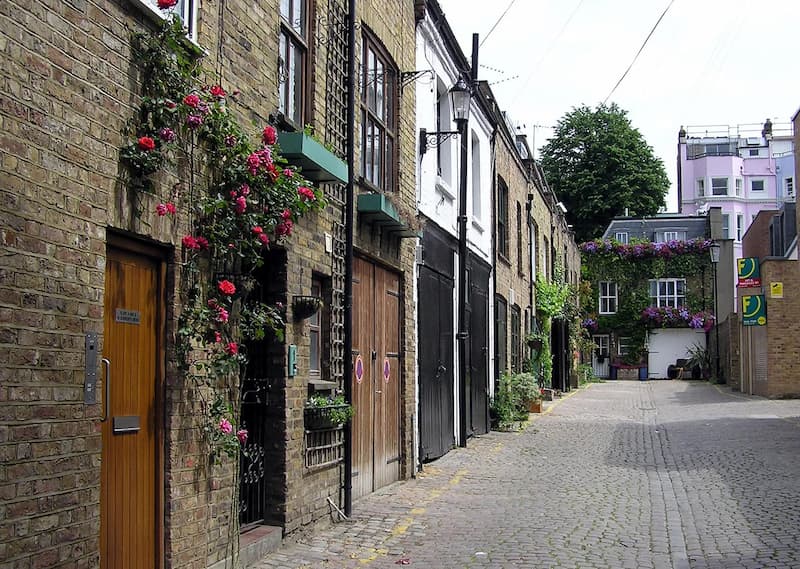What is a mews? A mews is a row or courtyard of stables and carriage houses with living quarters above them that was constructed behind large city houses prior to the early 20th century horse-and-buggy revolution. What do you need to consider before buying a mews house?
Mews are frequently found in prestigious neighborhoods because they were developed to house the horses, coachmen, and stable servants of wealthy residents.
Please continue reading the post to see an illustration of more specific information about what a mews is.
Describe Mews
Here are the details:
London
In cities, primarily London, the term “mews” was used to describe service streets and the stables located there. In the 18th and 19th centuries, wealthy Londoners typically lived in streets of large terraced houses with stables at the back that opened onto a small service street. A carriage house and horse stalls were located on the ground floor of the mews, and living quarters for the stable staff were located upstairs. Typically, this was mirrored by a second row of stables backing onto a second row of terraced homes that faced the next street on the other side of the service street. The variations occasionally included little courtyards. Most mews take their names from one of the main streets they back onto. Mews appears in the majority of their names, though not all.
The boroughs of Kensington, Chelsea, and Westminster—especially Mayfair and Marylebone—are frequent locations for mews.
Europe
In contrast to the majority of Continental Europe, where stables were typically located off a front or central courtyard, this arrangement was unique. When the family was not using the horses, the British system had the benefit of keeping the sounds and smells of the stables hidden from them.
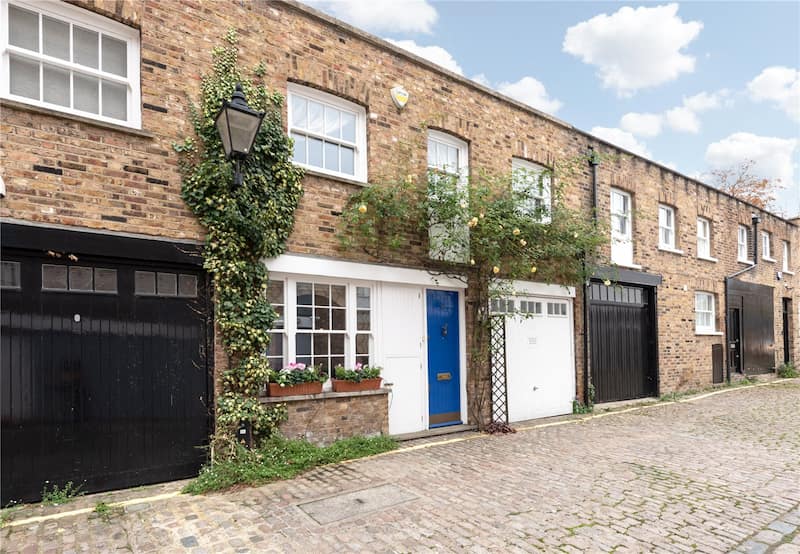
Stables Not Known As Mews
Large individual non-royal British stable blocks, a feature of country homes, are not used in mews. For instance, Chatsworth House’s expansive stable block is referred to as the stables, not the mews.
Mews Evolution
In the 18th and 19th centuries, the term “mews” was more commonly used to describe service streets and the stables they were attached to in urban areas, particularly London.
Conformity in the design of house fronts was desired during the Georgian era, when architecture was characterized by symmetry and balance. Towns and cities were rapidly growing at this time, and London construction was at an all-time high as the city was being rebuilt after the Great Fire of London in 1666. This resulted in rows of uniform terraced homes, many of which are still standing today.
Primary, secondary, and tertiary housing had to be separated according to Georgian town planning regulations. Stables, which are now regarded as secondary areas, as well as a staff of servants, were a necessity for wealthy families due to the increased use of horses and carriages. Mews were built in a row at the back with access from a side road to keep the horses and carriages away from the main houses and to maintain the aesthetic of the primary accommodations. Additionally, this arrangement kept the horses’ odor and dirt out of the house when they weren’t in use.
The ground floor of mews houses typically housed stables and a carriage house, with the upper floors housing the servants’ quarters. Most mews houses had windows facing away from the main house as a feature, allowing owners to stroll in their garden without worrying about being watched by servants. Similar to this, servants could move between the buildings undetectedly because the basements of the houses were frequently connected to the mews by an underground tunnel.
What Is A Mews House?
The structures that are now known as mews properties or mews houses were initially constructed in the 18th and 19th centuries as coach houses to house horses and carriages. Then, on the floor above, there was a place for the stable staff to stay. The purpose of these coach houses was to serve the needs of property owners who used horses and carriages as a mode of transportation. They were typically constructed behind larger homes and townhouses.
With two rows of coach houses facing each other and each row backing onto the larger residences they served, the coach houses were constructed along a “service street.” The result of this design choice are some charming, albeit smaller, homes tucked away in quiet cobblestone streets between some of London’s most striking structures.
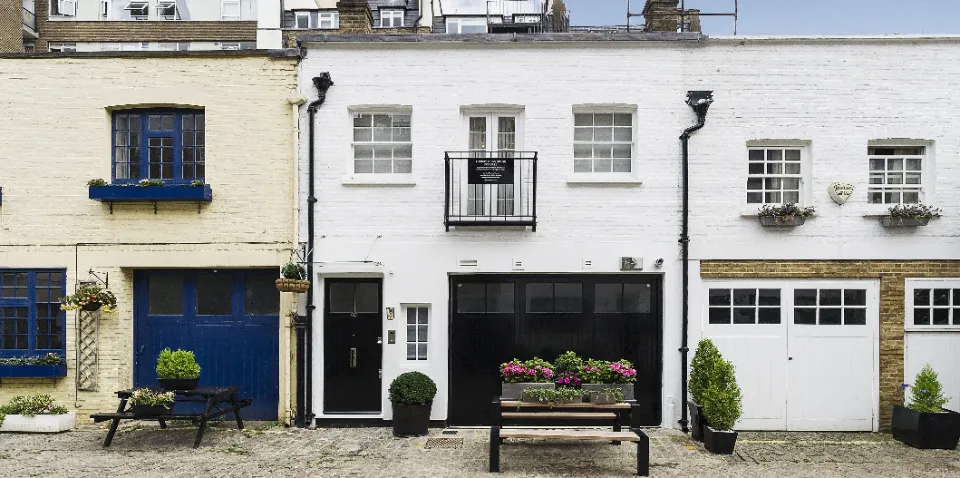
The Mews House: Decline & Rebirth
Horses and stables were gradually obsolete in the 20th century as the motorcar advanced. In addition, as society became more egalitarian following World Wars I and II, the proportion of people wealthy enough to reside in such lavish mansions drastically decreased.
The term “mews” came to refer to shady back streets as mews houses started to deteriorate and many were occupied by squatters. Francis Bacon, a painter, was one of the artists who purchased some for cheap. Race car drivers, like James Hunt, started purchasing mews houses so they could live above their cars because mews houses frequently have garages as well, which is unusual for London. Mews have also started to be turned into commercial buildings like garages and printing companies.
As is frequently the case, as the general public became aware of the benefits of the areas that artists had adopted and made desirable, gentrification started to take place in mews. Mews houses gained popularity as converted homes in the 1960s and were also modernized. Mews houses often do not have listed status, so they are very adaptable to modernization because their interiors can be drastically changed with few restrictions.
Mews houses are typically found in the most sought-after neighborhoods, like Notting Hill, Kensington, and Chelsea, because they were initially built to serve the upper classes. The mews have a charming and picturesque appearance thanks to the cobblestone streets, which were originally built to withstand wear from horses’ hooves. Mews houses have an inherent character and old world charm with their nearly traffic-free streets, tucked away behind the main road, enclosed, and frequently a cul-de-sac.
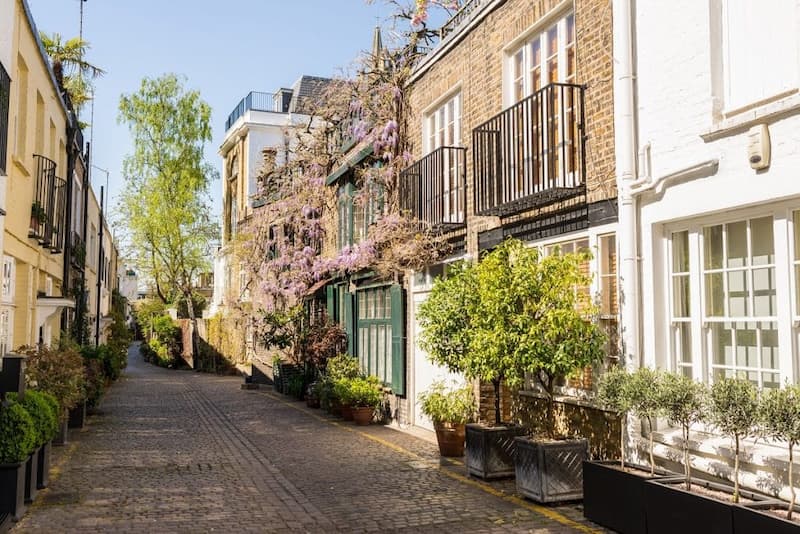
Things To Consider Before Buying A Mews Property
The most affluent areas of central London frequently have mews houses, which provide a tranquil haven away from the bustle of the city. They are very sought-after and could yield a good return on investment. If this has you scratching your head, here are five things to think about before purchasing a mews house.
Property Valuation?
Looking to Sell or Let Your Property? Book Your Free Property Valuation with one of our experts.
Alterations
Mews houses are not listed buildings, but many of them are located in conservation areas, which means that any exterior changes must adhere to local authority regulations.
Tenure
Most central London homes with a square footage comparable to a mews house will be leasehold apartments sold with additional maintenance fees. The freehold status of mews houses means that you will have complete ownership of the building. Buying a freehold property involves less legal work and generally has higher values.
Price
The demand for mews homes exceeds the supply. Their price is high considering their size as a result.
Living Space And Natural Light
The initial purpose of mews homes was to house servants. Since they only have windows on the front of the building, they frequently have small rooms, low ceilings, and few windows. Mews houses were purposefully built without windows at the back so that no one could see into the gardens of the grand houses they served. They are frequently chosen by city professionals, mature couples seeking a central city location in a quiet neighborhood, and the recently retired due to their modest size.
Gardens And Parking
Mews homes are situated off some of London’s busiest roads on tiny, cobbled lanes. They frequently lack gardens due to their size and location, though there may be room for a roof terrace. Another difficulty is parking. The majority of mews houses no longer have off-street parking because the area that was once the stables has been turned into living space. Parking is frequently prohibited on the mews street itself.
Privacy And Security
Mews streets achieve a balance between being quiet and being close to all the action because they are set back from central London’s busy roads.
In mews streets, where residents look out for one another, there is a strong sense of community that heightens security.
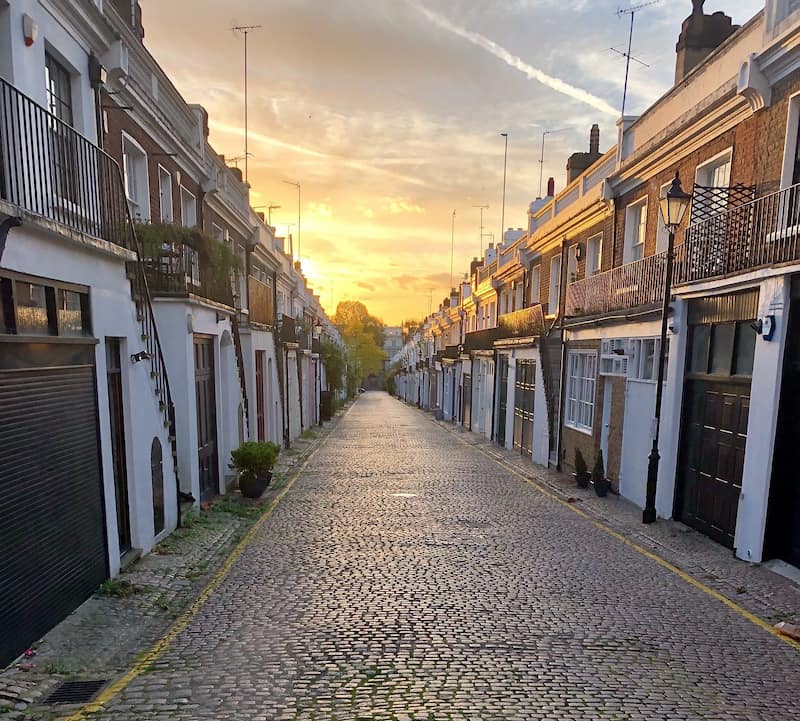
Why A Mews House Should Be Your New Home?
Here is the answer why a mews house should be your new home:
Individuality
There are many different house designs and layouts even within the same tiny cobbled mews. Some have integrated this space into the home, while others still have the original horse-cart garages. Many people do indeed leave the garage doors on while installing new flooring and decorating the garage to use it as an additional room. Because of this flexibility, residents of mews houses have more options for how to use their space than those of more traditional homes, which may limit their options.
Location
The location of mews houses is one of the key elements in why they are so well-liked and sought-after. Mews houses are frequently found behind some of London’s most popular streets and in some of the city’s most coveted neighborhoods. Additionally, because these homes are situated on a mews street, which is frequently also a cul-de-sac, they enjoy peace and tranquility while still being in the middle of a busy city. Additionally, mews houses typically have ample parking, with the houses that still have garages also benefiting from off-street parking, due to their location on a quiet street with few passing vehicles.
Community Spirit
The sense of community that comes with living on such quiet cobblestone streets is one of the main benefits. Even though the majority of mews houses lack spacious gardens, they more than make up for this by allowing residents to take full advantage of the peaceful streets with few cars. The lack of the usual anonymity that comes with living in a big city is frequently noted by residents as contributing to the village-like atmosphere. The availability and atmosphere of the gardens vary from street to street, but using the shared mews typically fosters a sense of community that is not always present in Central London.
Living Space and Natural Light
The initial purpose of mews homes was to house servants. They frequently have small rooms, low ceilings, and only front-facing windows as a result. In order to prevent residents from viewing the gardens of the opulent houses they served, mews houses were specifically built without windows at the back. They are frequently chosen by city professionals, mature couples seeking a central city location in a quiet neighborhood, and the recently retired due to their modest size.
Tenure
The majority of central London properties with square footage comparable to a mews house will be leasehold apartments sold with related service fees. Mews homes are sold as freehold properties, so you will have complete ownership of the home. Less legal work is involved in buying a freehold property, and values tend to increase.
Privacy and Security
Mews streets are set back from the busy roads of central London and so manage to strike the balance of peace and quiet with still being close to all the action.
Mews streets have a strong sense of community, with residents watching out for one another, which heightens the feeling of security.
Gardens and Parking
Mews houses are located on narrow cobbled lanes off some of the busiest roads in London. They typically lack gardens due to their size and location, though a roof terrace may be possible. Another difficulty is finding parking. In most mews homes, the area that was once the stables has been converted into living space, so there is no off-street parking. It’s frequently forbidden to park on the mews street itself.
Price
There is an excess of demand for mews homes. As a result, they are expensive relative to their size.
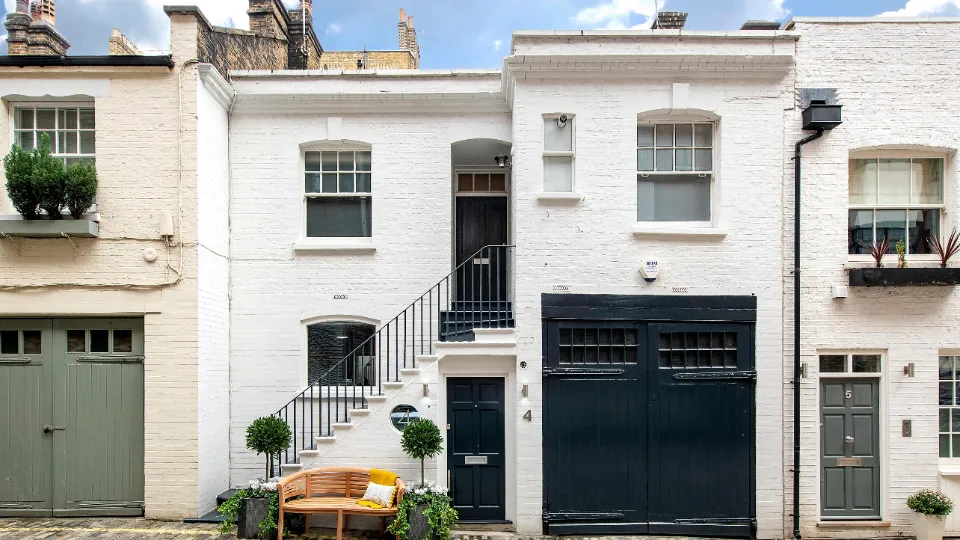
FAQs
What is MEWS Score?
The Modified Early Warning Score (MEWS) is a simple, physiological score that may allow improvement in the quality and safety of management provided to surgical ward patients. The main goal is to avoid delaying intervention or patient transfers for critically ill patients.
Living in a Mews House
Mews are typically quiet, safe streets with no through traffic that are situated behind main streets to benefit from incredibly central locations but with a quiet and peaceful atmosphere. These very lovely properties are perfect as homes or businesses and have remained great investments throughout the centuries.
Mews Street
Mews was applied to service streets and the stables in them in cities, primarily London. In the 18th and 19th centuries, wealthy Londoners typically lived in streets of large terraced houses with stables at the back that opened onto a small service street.
MEWS in Medical
The Modified Early Warning System (MEWS) is a tool designed to identify patients with declining conditions. For this purpose, it has been demonstrated to be superior to clinical. Any healthcare professional with the necessary training can use it, even though it was initially created for nurses.
Mews Etymology
The term mews originally referred to the royal stables in London, so called because they were built where the king’s hawks were once mewed, or confined at molting (or “mew”) time.
Final Thoughts
Originally designed to house horses with servant quarters above, mews houses were constructed in the 18th and 19th centuries. Mews are now homes for people who want to live in the center of London and have their own front door in a quiet neighborhood setting. Mews homes are viewed by many as the ideal way to experience London life because they are close to wonderful parks, independent shops, top-notch restaurants, bars, and excellent schools while still being in a charming, frequently traffic-free street.
Please leave a comment if you have any queries about what a mews is. As long as I see it, I’ll respond right away.
I really appreciate your reading. Thank you!
Read more:
